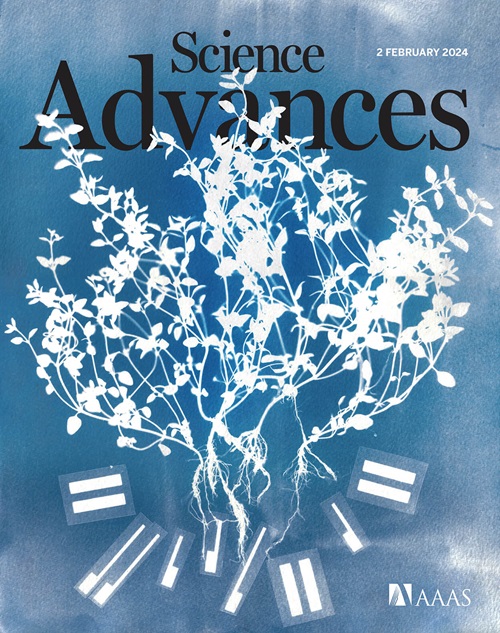Novel color via stimulation of individual photoreceptors at population scale
IF 11.7
1区 综合性期刊
Q1 MULTIDISCIPLINARY SCIENCES
引用次数: 0
Abstract
We introduce a principle, Oz, for displaying color imagery: directly controlling the human eye’s photoreceptor activity via cell-by-cell light delivery. Theoretically, novel colors are possible through bypassing the constraints set by the cone spectral sensitivities and activating M cone cells exclusively. In practice, we confirm a partial expansion of colorspace toward that theoretical ideal. Attempting to activate M cones exclusively is shown to elicit a color beyond the natural human gamut, formally measured with color matching by human subjects. They describe the color as blue-green of unprecedented saturation. Further experiments show that subjects perceive Oz colors in image and video form. The prototype targets laser microdoses to thousands of spectrally classified cones under fixational eye motion. These results are proof-of-principle for programmable control over individual photoreceptors at population scale.

群体尺度下个体光感受器刺激产生的新颜色
我们介绍了一种显示彩色图像的原理:通过细胞间的光传递直接控制人眼的光感受器活动。理论上,通过绕过视锥细胞光谱灵敏度的限制,激活M型视锥细胞,就有可能产生新的颜色。在实践中,我们证实了色彩空间向理论理想的部分扩展。试图完全激活M视锥细胞会产生一种超出人类自然色域的颜色,这种颜色是通过人类受试者的颜色匹配来正式测量的。他们将这种颜色描述为饱和度空前的蓝绿色。进一步的实验表明,受试者以图像和视频的形式感知奥兹色。在眼球运动的情况下,原型机将微剂量激光瞄准数千个光谱分类的视锥细胞。这些结果证明了在种群规模上对单个光感受器进行可编程控制的原理。
本文章由计算机程序翻译,如有差异,请以英文原文为准。
求助全文
约1分钟内获得全文
求助全文
来源期刊

Science Advances
综合性期刊-综合性期刊
CiteScore
21.40
自引率
1.50%
发文量
1937
审稿时长
29 weeks
期刊介绍:
Science Advances, an open-access journal by AAAS, publishes impactful research in diverse scientific areas. It aims for fair, fast, and expert peer review, providing freely accessible research to readers. Led by distinguished scientists, the journal supports AAAS's mission by extending Science magazine's capacity to identify and promote significant advances. Evolving digital publishing technologies play a crucial role in advancing AAAS's global mission for science communication and benefitting humankind.
 求助内容:
求助内容: 应助结果提醒方式:
应助结果提醒方式:


